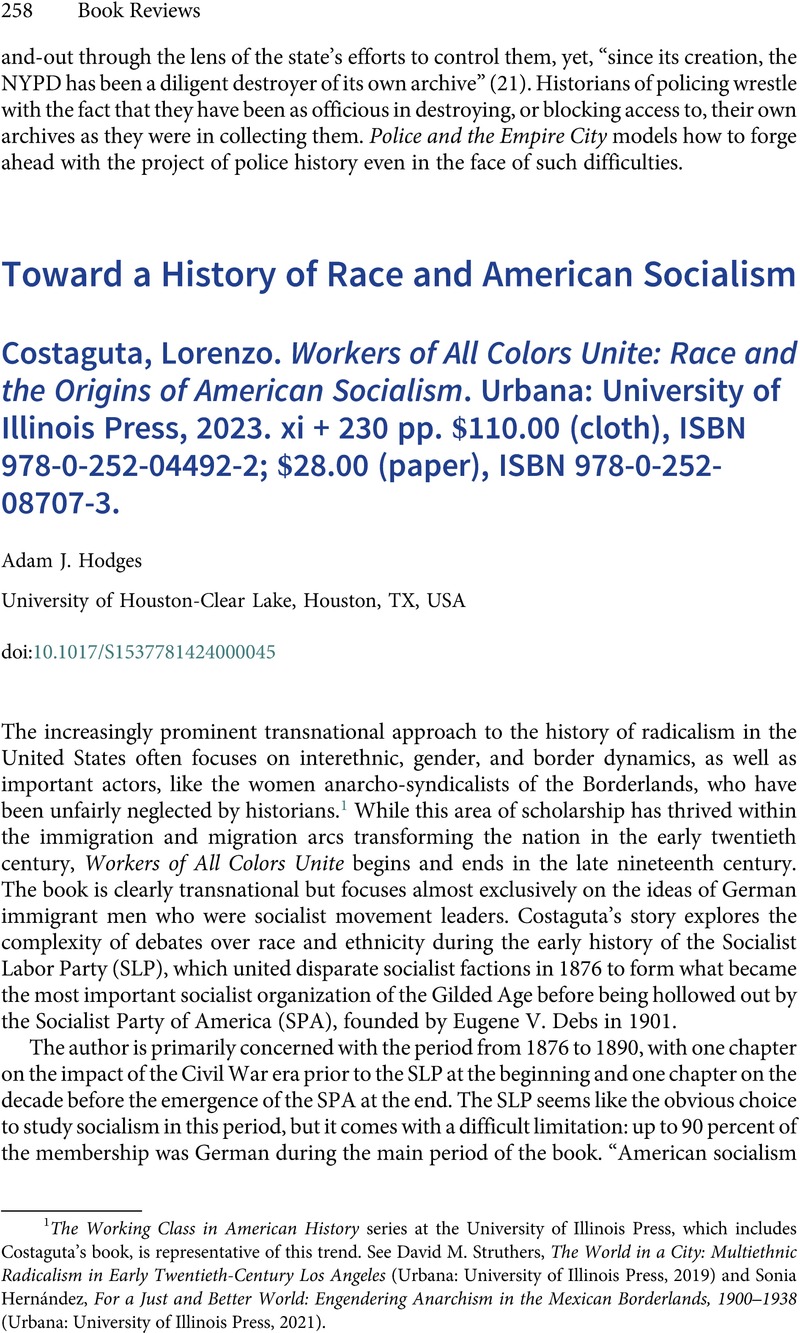No CrossRef data available.
Published online by Cambridge University Press: 17 May 2024

1 The Working Class in American History series at the University of Illinois Press, which includes Costaguta’s book, is representative of this trend. See Struthers, David M., The World in a City: Multiethnic Radicalism in Early Twentieth-Century Los Angeles (Urbana: University of Illinois Press, 2019)Google Scholar and Hernández, Sonia, For a Just and Better World: Engendering Anarchism in the Mexican Borderlands, 1900–1938 (Urbana: University of Illinois Press, 2021).CrossRefGoogle Scholar